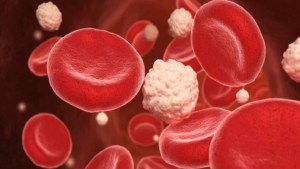At the Institute for the Advancement of Food and Nutrition Sciences research serves as the foundation for our actions. See our current grant opportunities below.
Current Opportunities:

Scientific integrity is a core value of IAFNS. Learn how we embed scientific integrity into every step of our research process.
Projects Funded by IAFNS:
IAFNS's mission is to advance food safety and nutrition science for the benefit of public health. View projects funded by IAFNS below, and learn how we embed scientific integrity into every step of our research process.
Metabolic and Physiological Properties of Rare Sugars Review Paper
Rare sugars are monosaccharides or disaccharides that exist in small quantities in nature and have unique metabolic and physiological properties that help distinguish them from more commonly consumed sugars like fructose and glucose. Due to their unique properties, rare sugars offer potential health benefits as part of an overall healthy diet pattern, including slower intestinal […]
Global Comparison of How Short-Term Blood Glucose Response to Food is Measured and Translated
The wide range of methods used to describe the impact of food on short-term glycemic response makes it challenging to apply research results broadly, including but not limited to its use on food labels. The choice of approach should be informed by selecting a validated method that translates into a meaningful consumer and public health […]
Updating the Metal Dietary Exposure Screening Tool
The IAFNS Food and Chemical Safety Committee invests in the training and education of future scientists and leaders in the fields of food and chemical safety and food toxicology by supporting a Summer Fellowship Program for doctoral students. This project focuses on updating the Metal Dietary Exposure Screening Tool. Detection of heavy metals at trace […]
Effect of the Use of Potassium-Based Sodium Replacers on Sodium and Potassium Intakes of the US Population
Sodium intake in the US population exceeds recommendations, and efforts have long been underway to reduce the amount of sodium in foods. Salt in the form of NaCl is the largest source of sodium in processed foods. Given the particular roles NaCl plays in foods (functional, taste, food preservation), it is difficult to remove it […]
Protein Intake and Human Health: Implications of Units of Protein Intake
Current dietary recommendations for protein intake are expressed as grams per kilogram of body weight in recognition of its role as the structural building blocks for lean body mass. Although FAO/WHO acknowledges that this recommendation is appropriate for those in the ideal weight-for-height ranges, it may not be appropriate for those who are overweight. This […]
Sampling of Post-Hurricane Florence Floodwater for Human Foodborne Pathogens
Heavy rainfall and flooding following a hurricane can massively impact water quality, especially via runoff from agricultural and industrial operations. The IAFNS Food Microbiology Committee is supporting researchers at North Carolina State University to examine the emergence, potential routes of contamination and proliferation, as well as virulence and susceptibility of three major foodborne pathogens in […]
Application of Acceptable Daily Intake Values in Nutrition Research Studies that Consider the Safety of Low-Calorie Sweeteners
Several recent publications on the intake of low-calorie sweeteners (LCSs) have compared intake data to the corresponding Acceptable Daily Intake (ADI) values. This indicates a use of ADI that may not be appropriate, since ADI is not meant to be considered a threshold for a safety concern at one moment in time. This may lead […]
Nutrient Adequacy and Diet Quality in a Randomized Controlled Trial with Normal and Higher Protein Intake
Foods that are high in protein are often rich in other nutrients that are unique to specific categories of foods (e.g., iron in red meat, vitamin E in nuts). When individuals select a protein-containing food on a calorie-controlled diet, it is at the expense of other foods in the diet. It is unclear what foods […]
Impact of New Labeling for Daily Values on Total Nutrient Intakes from Foods and Beverages
Changes to the Nutrition Facts Panel are underway following recently issued regulations by the FDA to correspond with current Institute of Medicine (IOM) Dietary Reference Intakes. However, the expected impact of this new labeling of Daily Values (DVs) on nutrient values is unknown. The objective of this project is to use the 2009-2010 and 2011-2012 […]
Opportunities for Improvement in Nutrition-Related Research: Implications of Overall Quality and Risk of Bias Domain Ratings
Nutrition research informs consumer eating habits, public policy, healthcare practice decisions and research agenda development. Yet, virtually every individual scientific study has limitations in design and methodology. The purpose of this study is to examine these limitations and identify ways to improve scientific methods and in turn, research quality, in the future. Institution: EF Myers […]
Associations Between Blood Fatty Acids and Sleep Duration: A Pooled Analysis of Prospective Cohort Studies
Sleep is a key lifestyle factor that both affects and is affected by diet. Data pooled from studies in the FORCE consortium will be examined to determine the relationship between blood fatty acid levels and either too much or too little sleep. Institution: University of British Columbia Principal Investigator: Rachel Murphy, PhD Year Awarded: 2018 […]
Key Findings and Implications of a Recent Systematic Review of the Potential Adverse Effects of Caffeine Consumption in Healthy Adults, Pregnant Women, Adolescents, and Children
Scientific findings lose their value if they cannot be easily translated for comprehension by diverse audiences. The Institute of Medicine (IOM) also recognizes this fact, and their guidance related to systematic reviews suggests that plain language summaries can improve the work’s usability for general audiences (IOM, 2009). Thus, the aim of this paper is to […]












